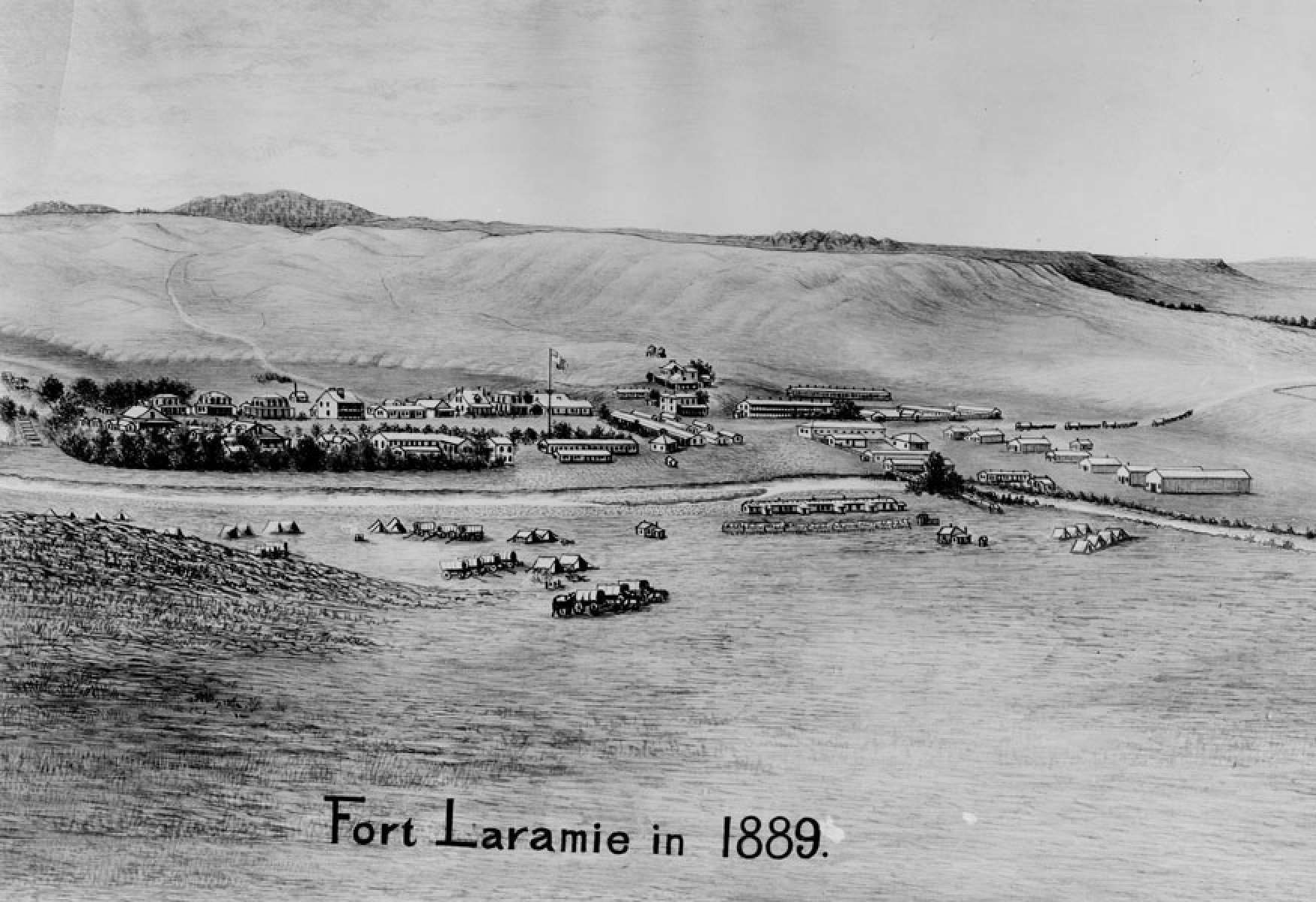At 12 15 P.M., crossing Laramie's Fork, a fine clear stream about forty yards broad, we reached Fort Laramie — another "fort” by courtesy, or rather by order— where we hoped to recruit our exhausted stores.

The straggling cantonment requires no description: it has the usual big flag, barracks, store-houses, officers' quarters, guardhouses, sutlers' stores, and groceries, which doubtless make a good thing by selling deleterious "strychnine” to passing 'trains who can afford to pay $6 per gallon.
Fort Laramie, called Fort John in the days of the American Fur Company, was used by them as a store-house for the bear and buffalo skins, which they collected in thousands. The old adobe enceinte, sketched and described by Frémont and Stansbury, soon disappeared after the place was sold to the United States government. Its former rival was Fort Platte, belonging in 1842—when the pale face first opened this road—to Messrs. Sybille, Adams, and Co., and situated immediately on the point of land at the junction of Laramie Fort with the Platte. "The climate here is arid and parching in summer, but in winter tolerably mild, considering the altitude—4470 feet-and the proximity of the Black Hills; yet it has seen hard frost in September. It is also well defended from the warm, moist, and light winds, which, coming from the Mexican Gulf, cause "calentures” on the lower course of the river. The soil around the settlement is gravelly and sterile, the rocks are sand, lime, and clay, and there is a solitary, desolate look upon every thing but the bright little stream that bubbles from the dark heights. The course is from S.W. to N.E.: about half way it bifurcates, with a right fork to the west and main fork east, and near Laramie it receives its main affluent, the Chugwater.
My companion kindly introduced me to the officer commanding the fort, Colonel B. Alexander, 10th Infantry, and we were at once made at home. The amiable mistress of the house must find charitable work enough to do in providing for the wants of way-worn friends who pass through Laramie from east to west. We rested and dined in the cool comfortable quarters, with only one qualm at heart—we were so soon to leave them. On these occasions the driver seems to know by instinct that you are enjoying yourself, while he, as an outsider, is not. He becomes, therefore, unusually impatient to start; perhaps, also, time runs more rapidly than it is wont. At any rate, after a short two hours, we were compelled to shake hands with our kind and considerate hosts, and to return to limbo—the mail-wagon.
From Fort Laramie westward the geological formation changes; the great limestone deposits disappear, and are succeeded by a great variety of sandstones, some red, argillaceous, and compact; others gray or yellow, ferruginous, and coarse. Pudding-stones or conglomerates also abound, and the main chain of the Laramie Mountains is supposed to be chiefly composed of this rock.
(The City of the Saints) [Page 90-1]